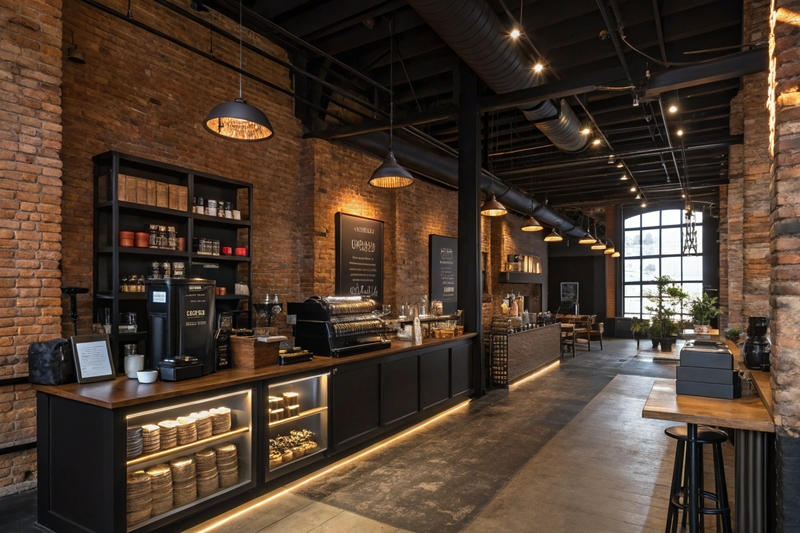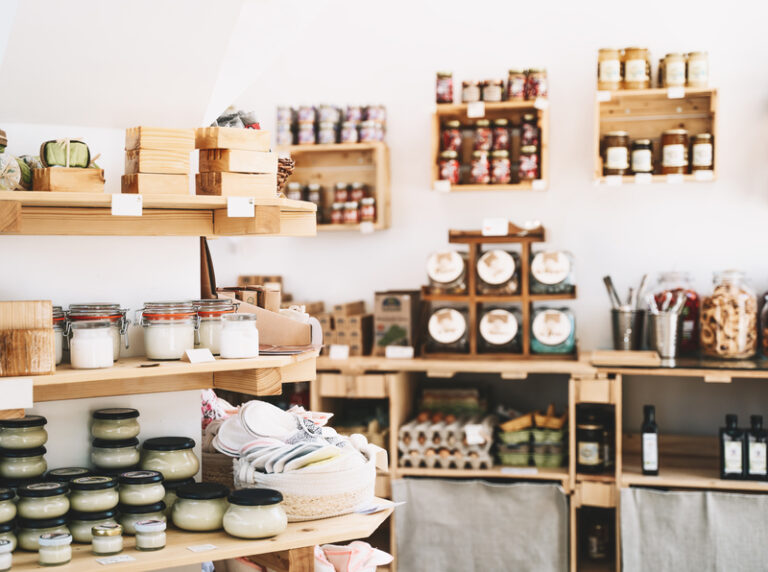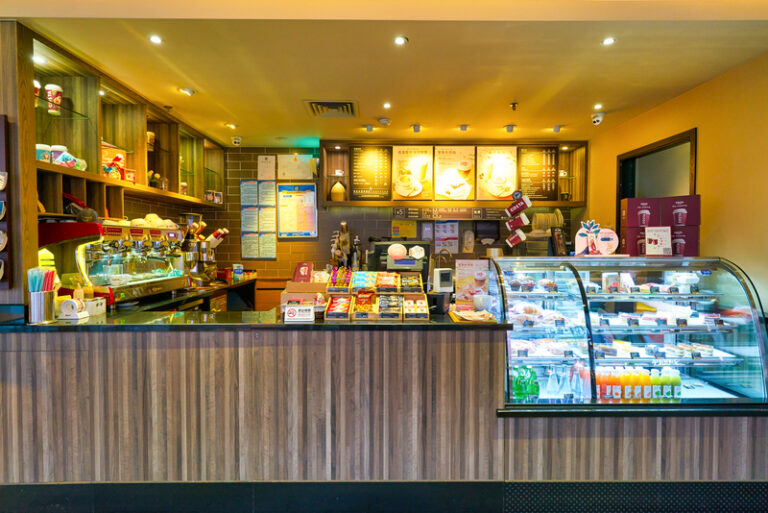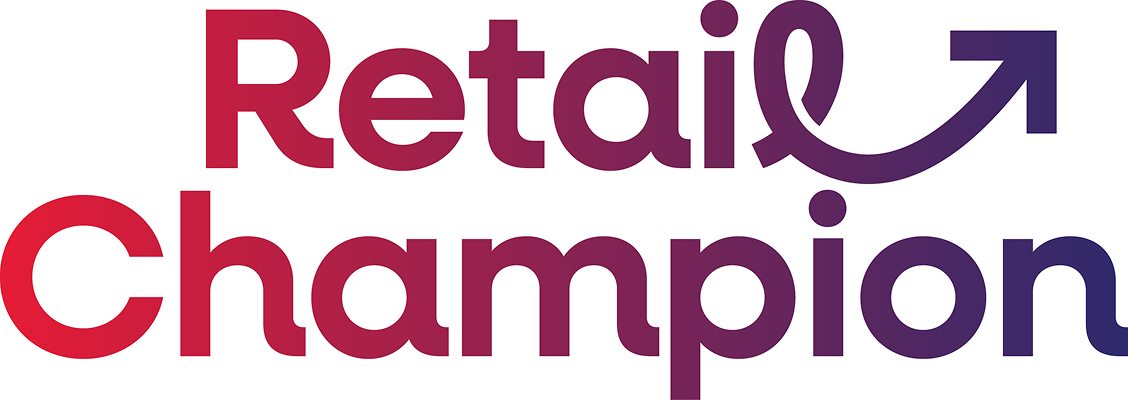
By Kim Hulse, Retail Growth & Marketing Expert
Last week I joined BBC Hereford Radio to chat all things customer psychology and why physical retail still has a powerful part to play in a digital-first world. Yes, ecommerce is convenient. Yes, digital gets the clicks. But your bricks? That’s where the magic happens.
Because when you’ve got a shop floor, you’ve got something online can’t easily replicate: atmosphere, emotion, and influence.
From layout to lighting, scent to signage, every inch of your space can shape how people feel and, what they buy. Whether you run a deli, a gift shop, or an indie boutique, your shop isn’t just where the stuff sits. It’s a strategic sales tool.
In this blog I’m looking how the right physical cues and subtle sensory nudges can help you sell smarter and create the kind of retail experience customers come back for, time and time again.
Store Layout: The Power of Intentional Flow
Your store layout shapes the journey a customer takes—and every step offers an opportunity to influence their decisions.
Directing the Customer Path
Understanding how customers move through your store helps you position products where they’re most likely to convert. That’s why:
Seasonal or promotional items are typically placed near the entrance, where they can immediately catch the eye. These displays often feature bold signage with urgency-inducing language like “Buy One Get One Free,” “Only £9.99,” or “When It’s Gone, It’s Gone.”
Destination products—those that customers come in specifically to buy—are positioned toward the back. This intentional placement encourages people to pass tempting extras along the way, increasing the chance of impulse purchases.
Gondola ends (the endcaps of shelving units) are prime real estate. They’re highly visible and ideal for showcasing bestsellers or new arrivals. It’s worth testing which gondola end positions perform best for your range.
Till areas are another hotspot. These small, high-traffic zones are perfect for low-cost, impulse items—think batteries, snacks, or travel-sized versions of popular products.
Strategic Shelf Placement
Shelving decisions aren’t random either. Eye-level space is reserved for high-margin or premium products because this is where customers naturally look first. Budget options tend to be placed on lower shelves, while aspirational or luxury items often sit slightly above eye level to signal exclusivity.
Additions like shelf talkers, face-forward displays, and shelf-edge strips can further draw attention and influence decision-making.
Click and Collect: Another Sales Opportunity
If you offer click-and-collect services, consider what surrounds the collection area. Strategically placed displays, mannequins, or complementary items can inspire additional, spontaneous purchases as customers wait for their click and collect purchases.

Mannequins and Display Equipment: Bringing Products to Life
We are visual creatures. Displaying products in context helps customers imagine how they’ll use them, and that dramatically boosts conversion rates.
A dress on a hanger is easy to overlook. On a mannequin, it becomes a styled outfit. You see the fall of the fabric, items paired to create a look, and of course, it’s more likely to catch your eye.
A build-your-own model set in a box is abstract. When built and on display, it sparks creativity and desire.
According to Retail Dive, visual merchandising can increase sales by up to 30% when products are displayed in context or use. Even simple touches like placing a hat on a head mannequin stand or jewellery a merchandiser on a can create a powerful emotional response.
Point of Sale: Nudging Decisions, Creating Urgency
Point of sale (POS) materials do more than fill space—they help customers make decisions, feel confident in their choices, and discover products they didn’t know they needed.
Great POS displays achieve four things:
Provide factual information: Highlight features, benefits, and specifications so shoppers can compare similar items easily. Visual graphics (e.g., energy efficiency labels) are especially helpful for quick assessments.
Recommend complementary products: Signage can suggest related items, either vital for the product (batteries or accessories) or linked products like “Goes well with…” or “Complete the look”. All these prompts help to increase basket size.
Inspire emotionally: Use imagery, testimonials, or aspirational styling to connect with the customer’s lifestyle goals or self-image. For example, bookstores often use “Staff Picks” to offer social validation and to encourage trust.
Clarify practical details: Prices, payment options, delivery timelines simple but essential info that removes barriers to purchase.
Modern POS can be physical or digital, depending on the brand experience you want to create. Digital POS allows for dynamic, responsive messaging, but printed materials still deliver what you need to say with authority if designed well.

Sensory Cues: Designing for the Five Senses
One of the biggest advantages of physical retail is the ability to engage all five senses. This is where bricks-and-mortar stores truly outperform online competitors.
Visual Appeal
Colour, lighting, and structure all play a role in grabbing attention and guiding the eye:
Blocks of colour can create a strong focal point, while contrasting hues help products stand out. How often has your head been turned when an entire window display is made up of blues?
Display geometry matters – use pyramids, graduated heights, and symmetry to add sophistication.
Lighting not only showcases key items but also reinforces your brand vibe. A luxury boutique might use soft spotlighting; a vibrant pop-up might use bold, energetic lighting.
Touch
Tactile engagement boosts emotional connection and purchase intent. This is especially true for clothing, furniture, and handmade goods.
Invite customers to touch, feel, and try. Samples and testers are key.
Ensure your mannequins and displays allow physical interaction – it makes a difference.
Scent
Smell is strongly tied to memory and mood. A pleasant store scent can significantly increase dwell time and spending.
A Journal of Retailing study found that ambient scent can boost purchase intent by over 80%.
Freshly baked goods, candles, essential oils, or even fresh flowers can transform the atmosphere.
Sound
Background music affects perception and pacing:
Match music to your brand identity. A premium menswear store will need different background tracks than a quirky stationery shop.
Natural sounds—like gentle customer chatter—can make a space feel welcoming and less intimidating.
Spatial Awareness (Proprioception)
How your store feels—in terms of space and navigation—signals a lot about your brand positioning.
Luxury retailers often feature wide aisles and minimal displays, allowing products to “breathe.”
Discount or convenience retailers typically have denser shelving, narrower paths, and a sense of abundance.
Observe where customers pause, browse, or speed up. Design around those behaviours to increase comfort and time spent.
Psychological Triggers: What Really Drives the Sale?
All of these techniques ultimately work because they align with core psychological principles. Buying decisions are often emotional first, rational second.
Scarcity and FOMO (Fear of Missing Out)
Limited-time offers, low-stock messages, or phrases like “Only two left!” create urgency. This taps into our innate fear of missing out—especially for trend-driven categories like fashion or tech accessories.
Social Proof
Shoppers trust other people more than they trust marketing. “Staff Picks,” “Customer Reviews,” and even photos of real people using products help validate choices.
According to Nielsen, 92% of consumers trust peer recommendations over advertising.
Inspiration and Aspirational Identity
When you help a shopper visualise how a product fits into their life, you’re not just selling the item—you’re selling the feeling. Whether it’s looking stylish, being prepared, or finding joy in a hobby, you’re connecting with who they want to be.

Final Thoughts: It's All About the Experience
At the end of the day, retail success is about more than stocking the right products. It’s about curating a space that evokes emotion, encourages exploration, and builds trust. Every layout choice, display stand, scent diffuser, and sign contributes to that story.
If you’re a small or independent retailer, the good news is you can do this too. Thoughtful tweaks to your layout, sensory design, and messaging don’t require huge budgets—but they can lead to big returns.
Ready to Optimise Your Store?
If you’d like help applying these ideas in your own retail space—or want a second opinion on your current layout or POS—we’d love to help.
Book a free discovery call to chat about how we can boost your sales by elevating your in-store experience.

Kim Hulse is The Retail Champion’s go-to marketing strategist, blending sharp commercial insight with a deep understanding of shopper psychology. She helps retailers turn every touchpoint, from shop window to checkout into an opportunity to engage, influence, and sell. When she’s not transforming customer journeys, she’s on the airwaves sharing practical, no-nonsense advice that works in the real world.
See more about Kim and the rest of the team on our Meet The Team page.
If you’ve enjoyed reading this you may also find this article of interest:
Reinventing the High Street: Why Retail Consultants Are More Vital Than Ever


